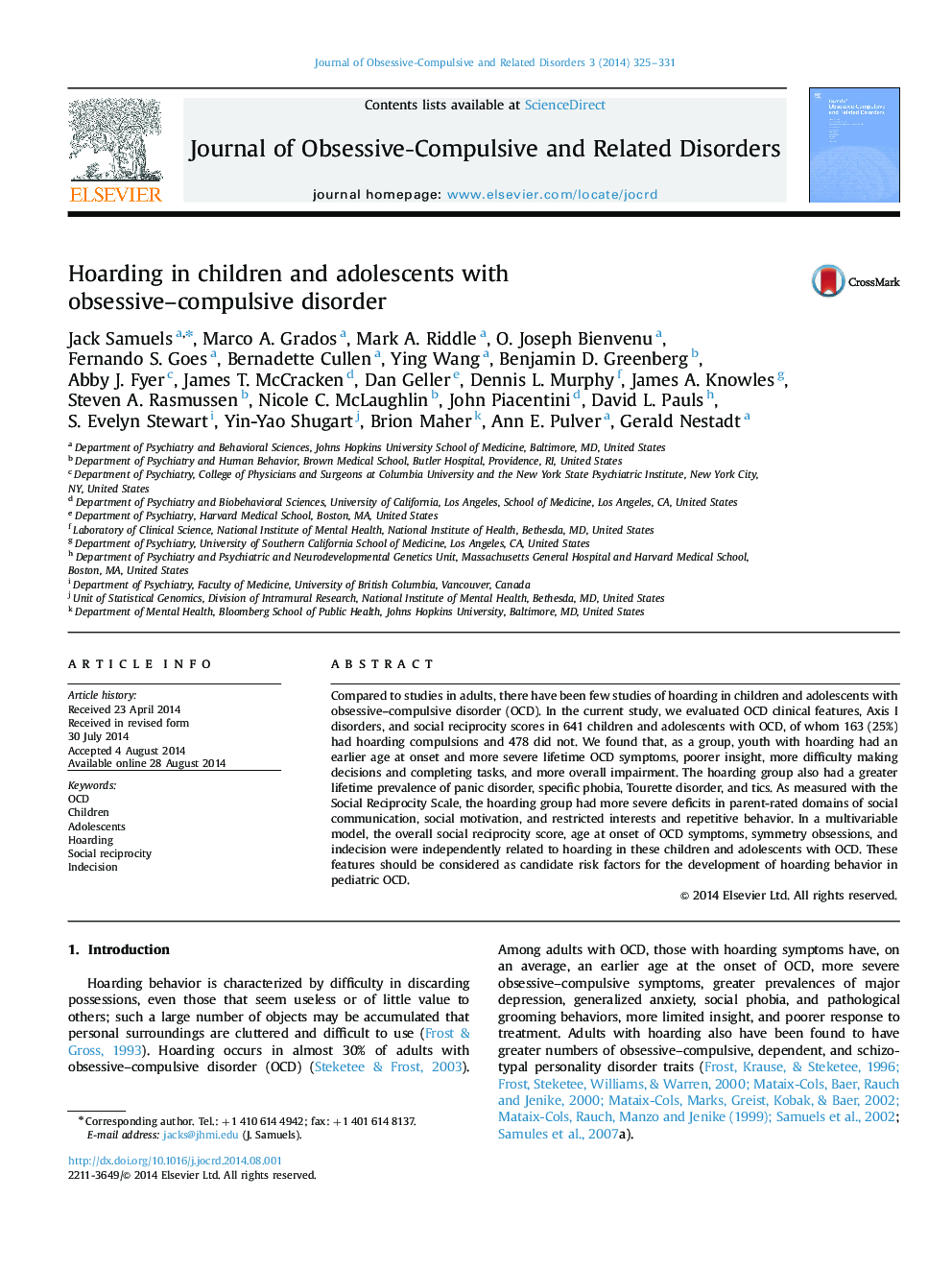| Article ID | Journal | Published Year | Pages | File Type |
|---|---|---|---|---|
| 10448935 | Journal of Obsessive-Compulsive and Related Disorders | 2014 | 7 Pages |
Abstract
Compared to studies in adults, there have been few studies of hoarding in children and adolescents with obsessive-compulsive disorder (OCD). In the current study, we evaluated OCD clinical features, Axis I disorders, and social reciprocity scores in 641 children and adolescents with OCD, of whom 163 (25%) had hoarding compulsions and 478 did not. We found that, as a group, youth with hoarding had an earlier age at onset and more severe lifetime OCD symptoms, poorer insight, more difficulty making decisions and completing tasks, and more overall impairment. The hoarding group also had a greater lifetime prevalence of panic disorder, specific phobia, Tourette disorder, and tics. As measured with the Social Reciprocity Scale, the hoarding group had more severe deficits in parent-rated domains of social communication, social motivation, and restricted interests and repetitive behavior. In a multivariable model, the overall social reciprocity score, age at onset of OCD symptoms, symmetry obsessions, and indecision were independently related to hoarding in these children and adolescents with OCD. These features should be considered as candidate risk factors for the development of hoarding behavior in pediatric OCD.
Related Topics
Health Sciences
Medicine and Dentistry
Psychiatry and Mental Health
Authors
Jack Samuels, Marco A. Grados, Mark A. Riddle, O. Joseph Bienvenu, Fernando S. Goes, Bernadette Cullen, Ying Wang, Benjamin D. Greenberg, Abby J. Fyer, James T. McCracken, Dan Geller, Dennis L. Murphy, James A. Knowles, Steven A. Rasmussen,
